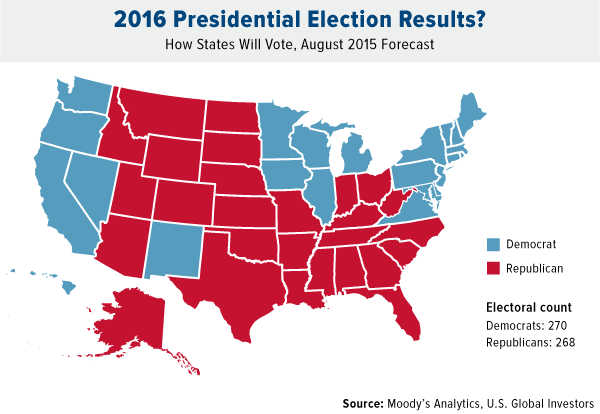I posted this four years ago when all the Presidential stuff was going on then. The information is still pertinent today, mainly because nothing has changed as far as the election process is concerned. Hopefully, you will find it informative, as well as providing some perspective on what all the hoopla is about. It is not what it is often projected to be.
The Process of Electing the President of the United States
August 24, 2012
So many people are under the delusion that come the first Tuesday in November that they will march into their respective voting centers, enter the voting booth with ballot in hand, and cast their vote for whom they wish to be the next President of the United States. The reason why the whole process is a delusion is because when it comes time to elect the President that is not how he is elected. The general population vote has no bearing upon the election. He or she is elected by politicians. The Second Article to the Constitution, along with the Twelfth Amendment to the Constitution, makes that very clear. Yet, since so many scoff and assume that they are making a difference, the following Article and Amendment are provided here, since those same scoffers usually are too busy playing patriot to go look it up on their own.
Article II. Executive Department
Section I. President and Vice-President
- Each State shall appoint, in such manner as the legislature thereof may direct, a number of electors, equal to the whole number of Senators and Representatives to which the State may be entitled in the Congress; but no Senator or Representative, or person holding an office of trust or profit under the United States, shall be appointed an elector.
- The Congress may determine the time of choosing the electors and the day on which they shall give their votes; which day shall be the same throughout the United States.
Amendment XII. Election of President and Vice-President
- The electors shall meet in their respective States, and vote by ballot for President and Vice-President, one of whom, at least, shall not be an inhabitant of the same State with themselves; they shall name in their ballots the person voted for as President, and in distinct ballots the person voted for as Vice-President, and they shall make distinct lists of all persons voted for as President, and of all persons voted for as Vice-President, and of the number of votes for each, which lists they shall sign and certify, and transmit sealed to the seat of the government of the United States, directed to the President of the Senate;—the President of the Senate shall, in the presence of the Senate and House of Representatives, open all the certificates and the votes shall be counted;—the person having the greatest number of votes for President shall be the President, if such number be a majority of the whole number of electors appointed; and if no person have such authority, then from the persons having the highest numbers not exceeding three on the list of those voted for as President, the House of Representatives shall choose immediately, by ballot, the President. But in choosing the President, the votes shall be taken by States, the representation from each State having one vote; a quorum for this purpose shall consist of a member or members from two-thirds of the States, and a majority of all the States shall be necessary to a choice. And if the House of Representatives shall not choose a President whenever the right of choice shall devolve upon them, before the 20th day of January [Amendment XX] next following, then the Vice-President shall act as President, as in the case of the death or other constitutional disability of the President.
- The person having the greatest number of votes as Vice-President shall be the Vice-President, if such number be a majority of the whole number of electors appointed; and if no person have a majority, then from the two highest numbers on the list the Senate shall choose the Vice-President; a quorum for the purpose shall consist of two-thirds of the whole number of Senators, and a majority of the whole number shall be necessary to a choice. But no person constitutionally ineligible to the office of the President shall be eligible to that of Vice-President of the United States.
In short, it is the Legislature of the each individual State that appoints electors to vote for both the President and Vice-President of the United States. Should the electors, by majority vote, not be able to elect the President and Vice-President, then the House of Representatives elects them, so long as there are two-thirds of all Representatives to constitute a quorum. If the House of Representatives are unable to elect the President by inauguration day, the Senate would place the elected Vice-President in the office of the President until the House of Representatives finally has elected a President. At no place in the Constitution or the Amendments to the Constitution is there a place where the popular vote counts toward electing either the President or Vice-President of the United States.
Some might argue, but the electors wait to see what the popular vote is, and then he or she places his or her vote to reflect the vote of the people. That is pure speculation. No one knows what is going through an elector’s mind, much less what the elector is looking at or not looking at, during an election. It is more likely that an elector votes his or her own conscience and completely ignores the popular votes, as is what has happened numerous times in U.S. history when a President is elected.
To make the previous point more clear, the following Presidents have been elected by the Electoral College without a majority of popular votes:
1824 – John Quincy Adams – was the only President elected by the House of Representatives; he not only had fewer electoral votes than did Andrew Jackson, but had 44, 804 fewer popular votes as well.
1867 – Rutherford B. Hayes – won the electoral vote over Samuel J. Tilden (185-184), but lost the popular vote by 247,448.
1888 – Benjamin Harrison – won the electoral vote over Grover Cleveland (233-168), but lost the popular vote by 90,728 to Cleveland, not counting the additional 249,506 votes for Clinton B. Fisk and 146,935 votes for Anson J. Streeter.
2000 – George W. Bush – won the electoral vote over Al Gore (271-266), but lost the popular vote by 543,895.
This data does not take into account the numerous other Presidents that have been elected by the Electoral College, yet did not have the majority vote, because there were more than two candidates running for the Office of the President.
1844 – James K. Polk – won the electoral vote over Henry Clay (170-105-0), but lost the popular vote to both Clay and James G. Birney by 23, 933.
1856 – James Buchanan – won the electoral vote over John C. Frémont and Millard Fillmore (174-114-8), but lost the popular vote by a combined 378, 708.
1860 – Abraham Lincoln – won the electoral vote over Stephen A. Douglas, John C. Breckinridge, and John Bell (180-12-72-39), but lost the popular vote by a combined 958,382.
1880 – James A. Garfield – won the electoral vote over Winfield S. Hancock and James B. Weaver (214-155-0), but lost the popular vote by a combined 269,365.
1884 – Grover Cleveland – won the electoral vote over James G. Blaine, Benjamin F. Butler, and John P. St. John (219-182-0-0), but lost the popular vote by a combined 296,525.
1892 – Grover Cleveland – won the electoral vote over Benjamin Harrison, James B. Weaver, and John Bidwell (277-145-22), but lost the popular vote by a combined 921, 243.
1912 – Woodrow Wilson – won the electoral vote over Theodore Roosevelt, William H. Taft, Eugene V. Debs, and Eugene W. Chafin (435-88-8-0), but lost the overall popular vote by 2,415,691.
1916 – Woodrow Wilson – won the electoral vote over Charles E. Hughes, A. L. Benson, and J. F. Hanly (277-254-0-0), but lost the overall popular vote by 2211,431.
1948 – Harry S. Truman – won the electoral vote over Thomas F. Dewey, J. Strom Thurmond, and Henry A. Wallace (303-189-39-0), but lost the overall popular vote by a combined 145,397.
1968 – Richard M. Nixon – won the electoral vote over Hubert H. Humphrey, Jr., and George C. Wallace (301-191-46), but lost the popular vote by a combined 9,396,159.
1992 – Bill Clinton – won the electoral vote over George H. W. Bush, H. Ross Perot, and Andre Marrou (370-168-0-0), but lost the popular vote by a combined 14,604,311.
1996 – Bill Clinton – won the electoral vote over Robert Dole, H. Ross Perot, Ralph Nader, and Harry Browne (379-159-0-0), but lost the popular by a combined 1,475,151.
The whole point is, the popular vote does not mean a whole lot when it comes to electing the President of the United States. Not only is the Constitution set up to deny recognition of the popular vote to elect the President, as the figures demonstrate above, a President has been elected at least four times by the Electoral College or House of Representatives in spite of popular vote sentiment.
Nevertheless, the Electoral College is designed to prevent a few heavily populated cities or states from determining the outcome of a Presidential Election for everyone else. That is part of the wisdom behind the Founding Father’s thinking. Each state is recognized as sovereign. Each makes its own decisions, yet with the confines of Constitutional Law. The latter is what keeps us all united in the common goal of promoting life, liberty, and the pursuit of happiness, rather than having a dictatorial few imposing their will on the remainder. It is not a perfect system and it tends to upset many people, self included, when their candidate does not win. But it is certainly better than anything else man has devised to rule and govern, which includes the lawlessness that many are proposing today to replace it.

